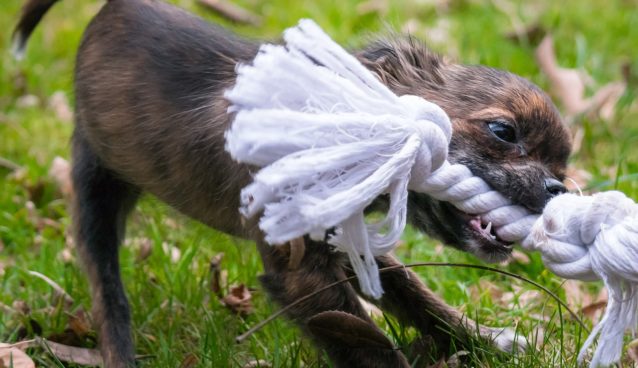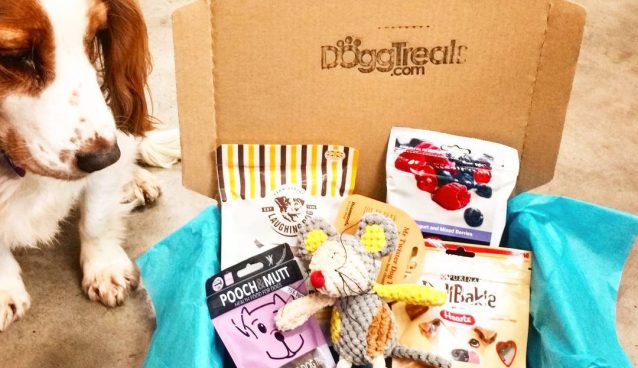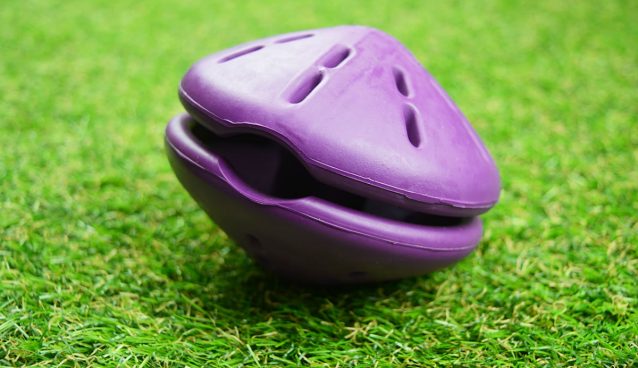Ultimate Dog/Puppy Training Guide – Everything You Need to Know
So you have a new puppy or dog that you want to get training off to the best start? Or maybe you have had a dog for a while, and you want to improve their manners, or train new tricks.
In either case, it is important – for both you and your dog – that you go about dog training in the right way. Sometimes training can be frustrating, and it can even do more harm than good if done wrong.
So here we have put together (an on-going) dog training guide, to get the most out of your relationship with your dog.
In this first part, we will run over the basics of dog training. These are the fundamental “rules” to abide by to make training fun and effective!
Not chosen your puppy yet? See our Choosing Your Puppy Checklist.
Just a couple of things:
Depending on what you are training your dog, or what your dog prefers, when I refer to “treats” I mainly mean tasty food, but this can also be another reward, like a toy.
When I refer to “tricks”, I mean both fun tricks like “wave”, “roll over” etc, and lessons, like “lie down”.
Dog Training Guide – Contents:
In this Guide:
Clicker and Treat Dog Training
Keep it Fun and Short
Teach Just One Trick at a Time
Don’t Run Before Walking
Only Reward Good Behaviour
How to Be Consistent
Don’t Confuse your Dog
Set Your Dog up for Success
Why you Shouldn’t Get Frustrated
Types of Re-enforcement
Tricks & Lessons List
Basic Lessons – Stuff every dog should know, including: Sit, Lie Down, Leave It, Wait etc
Coming Soon:
Dog Walking – Enjoy your walks more, lessons include: Heal, Stay, Fetch, etc
Safety Lessons – Keep your dog safe, lessons include: Road Awareness, Stop, Come Here, etc
Tricks – The fun stuff! Lessons include: Roll Over, Play Dead, Tidy Up, Wave, etc
More Guides
New Puppy Checklist Part 1 / New Puppy Checklist Part 2
Clicker and Treat Dog Training
I am surprised that a lot of dog owners have never heard of a “clicker” or “clicker training”. If you have heard of a clicker, you may still want to read on, as you may come across some information that is new or helpful, or that you simply have forgotten (as we all do!)
First of all, you don’t need a clicker or treats to train a dog, but a clicker makes training 5 times easier, and treats makes it 10 times easier (in my opinion!)
What is a clicker?
If you have never heard of a “clicker”, it is simply a device, usually a small plastic hand held device, that when pressed makes a distinctive and loud-ish “click” sound. This unique noise registers (once used a few times) very easily with your dog, and can easily be heard apart over other distracting sounds at home or outside.
Once used a few times correctly, the clicker acts to mark an exact action that your dog has done which your are trying to encourage. For example, when teaching “sit”, as soon as your dogs bum touches the floor, clicking the clicker marks that exact action, and your dog will pick learn a lot faster exactly what you want from him/her. Not using a clicker, or using it wrong, may confuse your dog, as it may not know exactly what you are wanting.
How to use a clicker
To start of with, the sound of the clicker will be meaningless. Just another household noise. To get the clicker meaning something positive, simply remove the clicker from its packet, get some “high-value” (very tasty) treats so your dog can see, and the first time you click the clicker, treat your dog. (Make sure your dog isn’t jumping up at you, or any other negative behaviour, when you first do this, or you will be rewarding the bad behaviour – see below).
Do this 5 or 6 times, and your dog will start associating “click” with “treat”!
When training, always have your clicker in your hand, and your thumb in the button. It is very (very very) important to click the exact moment your dog does the action you are trying to train (or a “lead-up” action for a more complicated action…more on this later). Click too late, and you dog won’t know you are rewarding him for.
You can also use a clicker to mark general good behaviour. Again, more on this later.
Once you have clicked your clicker to mark the desired action, be sure to reward instantly too. To do this, make sure you have a treat (or toy depending on your dog and the training) ready. Leaving a long delay between click and treat will mean the click will start getting boring.
Don’t over do the clicker. You can, depending on the training (eg healing), click without treating sometimes. While healing for example, you could “click, click, click, treat” to mark an ongoing positive action. But be careful not to over do this, as the click can start becoming meaningless. If your dog stops responding to the click, keep your sessions shorter, and start treating with “high-value” treats every time to make the clicker exciting again.
I don’t have a clicker, am I doomed to fail?
No! Not at all. You don’t need a clicker, but it does make it easier to train a dog. If you don’t have a clicker, click here (no pun intended!) to buy one.
If you want to start training right away without a clicker, no problem. You can use a verbal marker, or even make a clicker noise with your tongue/mouth. But just some pointers on this:
A verbal cue, like “good girl!” can be rewarding in itself, and can be exciting (usually a “good girl!” is said excitedly) and so can excite your dog. If you are trying to train something like being calm, healing, or something else more mellow, this may work against you! As it can excite your dog too much. In this case, use a different verbal cue which is more neutral, like “good”, with a flatter sounding voice. You can train this verbal cue into your dog using the same method you would with a clicker (mentioned above under “How to use a clicker”).
If you want to use a click sound with your mouth, be sure you don’t use this for anything else, like to mean “come here”, else this will confuse your dog.
Marking good behaviour in general
I go into more depth with this a bit later, but you don’t just have to use your clicker when training specific “tricks”. You can have your clicker ready in your hand when watching your dog, to mark behaviour you want to encourage.
For example, if you have a hyper dog you want to train to be calm and lie calmly in their bed, you can have you clicker in your hand (and a lot of patience!), and watch and wait. As soon as they go to their bed or lie down by their own choice, click and treat! This can sometimes be easier than trying to teach something as abstract as “being calm”. Be patient, have your clicker handy when sat watching TV, and simply mark good behaviour. Easy!
Again, just be sure to click exactly when your dog does the good behaviour, so they know what it is they are getting rewarded for.
Keep it Fun and Short
Training Sessions shouldn’t be long. Dogs can get bored, and start to associate training with “Oh no, school time?? Boring!”. Keeping it short will keep them wanting more! Always keep lessons fun, they should feel like play time rather than lesson time.
One Trick at a Time
It may take 2, 3 or 4 or more training sessions to teach a trick fully, and then even more to master it. Make sure to only teach your dog one trick or lesson at a time. If you start to teach a trick or lesson which your dog doesn’t quite get the first session, don’t start teaching them something else during the next session, other wise your dog will never learn commands or tricks, it will just be confusing. Master one trick before moving on to another. Of course, if you decide you have over estimated your dogs abilities right now, and dog isn’t quite ready for ‘walking on its hind legs whist balancing a beach ball on its nose’ after all, then by all means stop, and move on to something simpler, or split the actions up (read more on this further in the article).
But in general master one trick at a time. Remember, your dog doesn’t speak human, it will take time to 1. learn to do the trick, and 2. remember the command (if you have ever learnt a new language, you will know that new words to stick that easily, even for humans!), so be patient.
Don’t Run Before Walking
Master the trick
Teach lessons in a natural order. Some tricks or lessons will require other things to be taught first. For example, you would teach your dog to lie down first, and have this well established, before teach him to roll over. Similarly, you would teach your dog to fetch before teaching him to tidy his toys away (yes, trick will make your life a LOT easier! Learn how in our trick list).
Break it down
A lot of time you will find your dog isn’t quite ‘getting’ a trick, which can frustrate you and your dog. If this happens, stop to take a breather, and think of you can break the full trick down into smaller chunks.
Along the same lines as breaking a trick down, it is also important to remember is that you may sometimes need to reward your dog for even starting the behaviour, even if he doesn’t finish it. This is very important. If you continually try and get your dog to do something, without reward, you will be creating a “boring school” mind-set for your dog, dis-hearten them and ultimately put them off training.
For example, if you are trying to train your dog to roll over, you would want to break the trick down into lying down, lying on their side, then rolling, each action or step which is in the right direction should be rewarded, once your dog has learnt each step (after say 10 goes) stop treating until they make a step even closer. These small steps can be encouraged in various ways. There is more about this later, and also our specific trick lessons will teach you these steps.
It’s Easy to Reward Negative Behaviour – Don’t!
One thing where we tend to fail at with dog training, without even realizing, is rewarding and re-enforcing negative behaviour. Dogs are fast learners, and they are quick to learn the rules of the pack (in your case, the house rules). Especially when puppies, they are very mouldable, but they are also very cute! This can make it hard for us to resist their cute little faces, and we end up letting them get away with just about anything, and they learn that they can get away with just about anything!
These things we let them get away with may be just “small” things like jumping up at you when you come home. We might say “aww, he’s excited to see me, isn’t that cute!” Or they could be bigger things, like chewing the new table leg.
So, how are you potentially rewarding negative behaviour? Well, what does your dog want more than anything? Usually Food, Attention or Play time. If your dog does something negative, we probably wouldn’t consciously reward them. But take a step back and think, “has my reaction been positive for my dog? Have I just given him what he wanted?”
Take for example if your new puppy jumps up at you. Cute, right? No big deal. But you think you best stop that behaviour, so you lean down with your palms out to try and stop the jumping. What happens? Your dog stops jumping up, as your hands are now in reach. Great! So you stroke and pet your dog. 6 months later, your dog is still jumping up, and you cant work out why he hasn’t learnt yet that you don’t want him to jump up. Why? What does your dog want when jumping up to greet you? Attention! As soon as you lean down, even though in your mind you are stopping the jumping, what is your dog getting? Attention!
This same kind of principle applies to every part of dog training. If you give your dog a positive experience when he/she is doing something unwanted, you are rewarding him, its just as if you are having lots of mini training sessions to encourage your dog do that behaviour.
Remember, with any negative behaviour, your dog wants something (Food, Attention or Play time). The easiest way to stop that negative behaviour is these two simple but vital steps: 1) make sure the opposite happens to what your dog wants, and 2) replace that bad behaviour with something else. (Learn how to use these two vital steps and also how to stop jumping up in our Tricks & Lessons section).
Start as you Mean to Go On
It’s easier to train something new into your dog, rather than having to train out a bad habit first that he has picked up. When getting a new dog or puppy, make a list of your rules you intend to stick to, and behaviour you want to train into your dog, and start training your dog on these things right away. For example, if you don’t want your dog on your sofa when he/she is older, don’t let your dog up when a puppy, otherwise you will have a difficult time training this out of them later on. (Tip: want to snuggle your puppy? Sit on the floor with him/her. They will love it!)
For a list of the basic and important lessons to teach your dog, see our Basic Lessons page.
Be Consistent
This is usually harder to do than you think, but it is very important to have a well trained dog. Being consistent means your dog will learn faster. Being inconsistent will mean your dog will learn he can get away with things, that he doesn’t always have to do what you say, will undermine your previous training, and ultimately make training very difficult.
What does being consistent mean? Basically if you don’t want your dog to do something, never let him do it. If you let your do jump up sometimes, pull on the lead sometimes, eat of a plate sometimes, then he will only be learning he is allowed to do it, and training against these behaviours will be even more difficult. As well as that, if sometimes they are allowed, then other times they get told off, this can be very confusing and unfair for your dog.
Being consistent with dog training can be hard because it usually requires a lot of patience! If your dog barks when left in another room (and if you don’t want this behaviour), you may be tempted to “let them out just this once”, or let them out after a couple of minuets even if they are still barking. By doing this, you will only be undermining yourself, and be encouraging them to do it. Find out how to stop nuisance barking in our training section.
Don’t Confuse Your Dog
Similar to being consistent, make sure not to confuse your dog. Confusing your dog could undermine his/her confidence (if he/she is getting told of for something, when at another time he/she wasn’t getting told off for it). For example, some of the time you allow your dog jump up at you to greet you, but suddenly scold him one day for jumping up (how was he to know you had an expensive outfit on today?!) then this will be confusing for your dog. If sometimes you don’t want a behaviour, its always best to train them to never do that behaviour (you can always train your dog to jump up but only on command!).
Always Set your Dog Up for Success (Never for failure)
The easiest way to train any animal, is when they find training fun. When they are being trained, and getting praise, it is good for your dogs confidence, and they learn fast, as to them it will seem like just a fun game.
The hardest way to train any animal is if they aren’t understanding what the “game” is, can feel you getting annoyed with them, not getting any rewards, and maybe even getting told off for not doing it right!
To set your dog up for success with any training session, always take lessons one step at a time, break the lesson up into smaller parts, and don’t push your dog to hard.
For example, if you are trying to train your dog to not bark at other dogs, always split the lesson up into “bite size” chunks. Start in a field with your dog on a lead where you know other dogs will be. Make sure you keep at a distance where you know your dog will see the other dogs, but you know its not so close he will bark. When he looks at the other dog and doesn’t bark, praise him, or treat him. You can then work closer to the other dogs. Don’t go into a situation where you know it will be too close to other dogs (for example an enclosed space, or a path dogs will be walking right past you), and that your dog will probably bark, this is setting up for failure. If you do take the lesson too far too soon, just take it a step back and carry on.
Don’t Get Frustrated
As mentioned a few times, training is easiest for your dog, and for you, when it is fun. You may get frustrated at times (I have been guilty of this and I am sure so are most other dog owners!), but keep in mind this will never help to train your dog. It will probably even hinder the training overall.
Keep training lessons short enough so they stay fun, and do them at a time you have specifically set aside for some fun training. Trying to train your Springer Spaniel to heal while in a rush walking to an appointment at the dog groomers will only end in tears! Remember to use the other points above (splitting lessons up into smaller chunks etc) to help you remain calm allow your dog to progress in the lesson.
Getting frustrated will only make your dog hate the training as much as you do. Keep it fun!
Use Positive Re-enforcement, Negative Re-enforcement & Discipline
Isn’t negative re-enfacement and disciple the same thing?
No! this is NOT what negative re-enforcement means! Negative re-enforcement does not mean discipline. Confused? Read our full article on positive and negative dog training here.
But just a quick overview – Don’t think that positive means your dog will enjoy it, and don’t think that negative means your dog will hate it:
Positive Re-enforcement: Something your are adding to the training, this could be treats.
Negative Re-enforcement: Ok, so “negative” doesn’t mean “bad”, it means something your are taking away from the training, or from the dog. This could simply by you ignoring your dog when he is jumping up.
So since your are already reading this, you may also sometimes need to discipline or “punish” your dog. This does not mean beating them senseless! It may mean a firm “NO!”, a time-out, or a similar correction. It’s great to treat your dog for good behaviour, but if you never correct bad behaviour, your dog will learn to be good when he wants something, and bad when he’s not too bothered.









